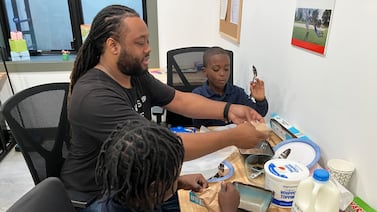Sign up for Chalkbeat New York’s free daily newsletter to keep up with NYC’s public schools.
New York City’s Education Department is developing a new tool that could help high school applicants gauge their chances during the city’s notoriously complex admissions process, officials confirmed to Chalkbeat on Thursday.
The monthslong admissions process can be daunting for the tens of thousands of eighth grade students applying to public high schools each year, requiring families to consider more than 700 programs at over 400 schools. Schools across the city also employ different methods to determine admissions, further complicating the process.
For example, the city’s selective screened schools sort applicants into four different priority groups based on their seventh grade GPAs in core subjects. In cases where there are more applicants in a priority group than seats, selections are made based on a random number assigned to each applicant, sometimes referred to as a “lottery number.”
Meanwhile, schools that use open or educational option admissions primarily consider an applicant’s random number for admissions — though some take into account additional criteria to create priority groups. (Educational option programs set aside seats for students at different academic levels to promote academic diversity.)
Some schools also require admissions essays or auditions, while others participate in a diversity initiative, setting aside a certain number of seats for students who are low-income, English language learners, or live in temporary housing.
The new tool — which is being developed through a partnership with Clemence Idoux and Viola Corradini, two affiliates of the Massachusetts Institute of Technology’s Blueprint Labs — would live within the MySchools directory, and would take into account the many potential factors that can play a role during the admissions process, according to Education Department officials. That includes a student’s random number, as well as their home borough, their course grades, and more.
Officials said the tool is intended to give families more information as they determine which schools they plan to apply to. However, officials did not say whether the tool would be available during this year’s admissions cycle, adding the Education Department is continuing to engage with families to solicit feedback on the potential tool, and the timeline for its release remains unclear.
Elissa Stein, an admissions consultant who runs High School 411, believes such a tool would be “both helpful and disheartening.”
It’s “constructive to get a more realistic sense of where kids stand,” she said. But it would “also be a blow when students and families discover what is out of reach due to a random number.”
Julian Shen-Berro is a reporter covering New York City. Contact him at jshen-berro@chalkbeat.org







